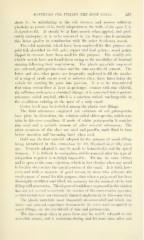Page 439 - My FlipBook
P. 439
MATERIALS FOR FILLING THE ROOT CANAL. 437
about it ; be iinirritating to the soft tissues ; and possess sufficient
plasticity to permit of its ready adaptation to the walls of the space it is
desitjned to till. It should be at least aseptic when applied, and pref-
erably antiseptic : it is to be esteemed in the degree that it maintains
this latter quality in combination with the other desiderata stated.
The solid materials which have been employed for this purpose are
gold foil, shredded tin foil, gold, copper and lead points ; wood points
dipped in creosote have been used for this purpose. The readily oxi-
dizable metals have not found favor owing to the possibility of dentinal
staining following their employment. The plastic materials employed
are softened gutta-percha cones and the zinc oxychlorid cement. The
latter and also other pastes are frequently employed to fill the meshes
of a wisp of crude cotton wool or asbestos fiber, these latter being the
vehicle for carrying the paste into position. It is to be remembered
that when cotton fiber is kept in prolonged contact with zinc chlorid,
the cellulose undergoes a chemical change : it is converted into a pectous
substance called amyloid, which is a colorless colloid, unchangeable in
the conditions existing at the apex of a pulp canal.
Cotton itself may be included among the plastic root fillings.
The fluid substances employed are solutions of red gutta-percha
base plate in chloroform, the solution called chloro-percha, which con-
tains in this case vermilion ; if made of white gutta-percha it contains
zinc oxid and a variable amount of other mineral substances. The
other members of this class are salol and paraffin, made fluid by heat
before insertion and becoming hard when cool.
Gold was the first material adopted for the purpose of canal filling,
being introduced in this connection by Dr. Maynard over fifty years
ago. Properly adapted it may be made to hermetically seal the apical
foramen. It is difficult to manipulate, and its removal after the type of
adaptation required is wellnigh impossible. Tin has the same virtues
and is open to the same objection, which in fact obtains when any metal
is forcibly driven into the apical portion of the canal. It is held, how-
ever, and with a measure of good reason, by those who advocate the
em})loymcnt of metal for this purpose, that when a pulp canal has been
thoroughly sterilized and filled, the necessity for the removal of the root
filling will never arise. The degree of confidence expressed in this opinion
has not yet served to override the caution of the conservative operator,
so that metals have an extremely limited employment in this connection.
The plastic materials most frequently recommended and which sta-
tistics and general experience demonstrate to serve most acceptably as
canal fillings, are the oxychlorid of zinc and gutta-percha.
The zinc cement when in paste form may be readily adapted to any
accessible canals, and it maintains during and for some time after set-


